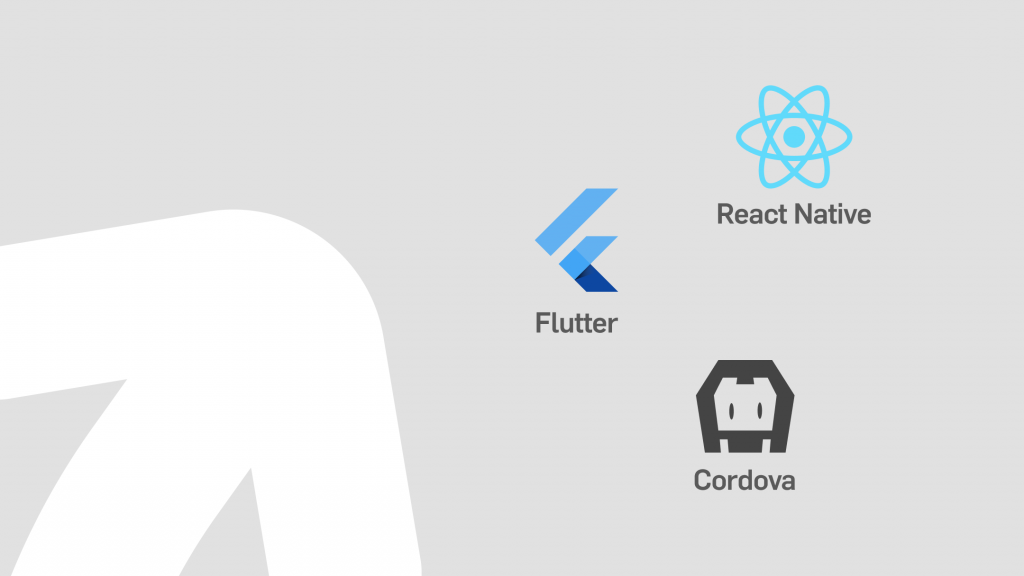Did you know that until a few years ago, native mobile application development was the sole way to build an app? Today, roughly one-third of mobile developers use cross-platform technologies or frameworks.
At Expert Network, we’ve embraced this shift to elevate our clients’ businesses. No fluff, just facts.
So, in today’s blog we delve into three impactful cross-platform frameworks and then, we’ll share our journey with them and the benefits they brought to our projects.
Three Impactful Mobile Frameworks: React Native, Cordova, Flutter
1. React Native is one of the most popular cross-platform app development frameworks today. It was used by 38% of developers worldwide in 2021 and chosen for the development projects of big businesses including Facebook, Microsoft, and Uber. Originally developed by Facebook as part of an internal hackathon project to improve Facebook products, the engineers decided to open-source it when they realized what an interesting framework they had created.
React Native is built on JavaScript and enables the building of complex natively rendered cross-platform apps via a single reusable code. It is known for providing a native-like feel and natural user experience due to its remarkably advanced features and its ability to utilize native features on each platform (Android, iOS, etc.). Since it uses the JavaScript library, React Native has a modest learning curve and anyone with a JavaScript background can easily learn to work with it.
Features:
- Open-source cross-platform app framework with a large community to support and improve it by fixing bugs and introducing features.
- Reusable code, which reduces development time (developers do not need to code separately for the same app on different platforms) and keeps costs low.
- Integrates the benefits of JavaScript and React.JS.
- Provides developers with the advantage of writing modules in Objective-C, Swift, or Java languages.
- Focuses on UI and uses native UI components, which allows developers to build a highly responsive, customized, and smooth interface.
- Uses modules and libraries in the React Native cross-platform apps, so developers can also perform heavy operations such as image editing or video processing.
- High compatibility with third-party plug-ins, such as Google Maps.
2. Apache Cordova is an open-source mobile development framework that runs on existing standard web technologies: JavaScript, HTML5, and CSS3. Since the majority of developers are already familiar with these coding languages, it is easy to learn and is a great tool for quick prototyping or building simple apps.
Cordova wraps the HTML/JavaScript app you build in a native container that can access the device functions of several platforms. These functions are exposed via a unified JavaScript API, allowing you to use one set of code to target multiple platforms. Cordova also has many free-to-use plug-ins created by its developer community, who have been contributing to the framework for over 13 years since its initial release.
Features:
- Runs on existing standard web technologies (JavaScript, HTML5, and CSS3), reducing the learning curve and time required to start developing apps.
- Web-based UI running in a WebView, so it looks like a website inside an app.
- Lots of free-to-use plug-ins and modules created by Cordova’s community.
- Supports a single codebase to create apps for different platforms.
- Offers a cloud solution to developers, providing them with the choice to share an app in the development process for feedback from other developers.
- Entirely supports in-built device features such as GPS, camera, phonebook, storage, etc.
- Its architecture has a plug-in nature, which means access to native device APIs can be extended in a modular way.

3. Flutter is an open-source framework introduced by Google in 2017 that has become very popular in recent years. According to Google in April 2020, 500,000 developers used Flutter every month and Statista records 42% of developers worldwide using Flutter in 2022.
Flutter allows developers to easily and productively create apps that can run on multiple platforms with uniformity and dynamicity. It uses Dart as a coding language and does not require a JavaScript Bridge, which helps developers to write code in a shorter amount of time. User interfaces are designed specifically for platforms, so Flutter apps can give users the immersive experience they’re looking for.
Features:
- Promotes portable GPU, which renders UI power, allowing it to work on the latest interfaces.
- Single codebase using Dart (80% reusability and does not require a JavaScript Bridge), and the UI itself is also shareable.
- Hot-reload makes it possible to see changes in the code instantly, speeding up the process and enabling developers to correct errors at low cost and effort.
- High-quality performance, creating apps that look and feel like a native app.
- Quick and efficient development process, making it the perfect choice to develop Minimum Viable Product (MVP).
- Developers can create customized complex widgets or use built-in widgets in Flutter’s widget library.
- Built-in graphic engine, so developers do not need to make separate interfaces for Android and iOS.
Our Journey to Cross-Platform and the Benefits
Cross-platform frameworks can help to save time, money, and convenience. They cost less, have reusable code, and provide greater user exposure. It’s also easier to prototype or test ideas, quicker to implement updates, and possible to achieve a shorter time-to-market and development timeframe. All these factors and benefits fueled our decision to switch from JavaScript to cross-platform technologies.
Since we started using React Native at its full potential, user feedback and experience have improved significantly and almost instantaneously. As an example, the Workero project’s transition went so well that we have since developed another app for the same ecosystem.
With other projects, we’ve used React Native from the get-go. For instance, with Growzer, we helped the HoReCa users to efficiently and rapidly manage their day-to-day tasks (restocking, purchasing orders, etc).
Learning Opportunities and Business Growth
After fully embracing the use of React Native, TypeScript, and defensive programming, we’ve seen immense improvements in app stability, UI, and user feedback. But we’re not going to stop here. We learn continuously from our projects by addressing errors and transforming them into learning opportunities.
We have internal systems and hold training sessions or tutorials so that each member of a team is ready and able to access the information needed to handle their tasks. With this approach, we have reduced the number of errors on mobile application projects by 99% using fairly well-defined principles as a defensive program. Andrei, our Mobile Tech Lead, spent four months rewriting an entire application to reduce errors and crashes. Doing this helped to increase the quality and robustness of the app.
We have also introduced fast recovery plans and a defensive programming approach to build apps. The fail-proof recovery plans prevent us from failing. Even if the code is more tedious to write, defensive programming allows us to ensure that the apps run without problems at the end of the day.
React Native allows us to create smaller teams that are also extremely well-organized, dynamic, tech proficient, and flexible. These qualities open doors to adopting bigger and more complex projects. With such smaller and well-prepared teams, the whole setup is cost-efficient and delivers work smoothly. This has had an impact on our Mobile department as it has since grown considerably and continues to expand due to the successful management of various projects.
Implementing cross-platform technologies has helped Expert Network reach further growth, improvement, and success. Although we have yet to implement Flutter in our projects, it is a buzzword that has become a must-know topic in conversations. We stay in the know of upcoming trends and continuously explore the best options to help our clients expand their business and reach sustainable growth.
Share this article on
Be part of our team
Want to see more about how it is to work with us? Visit our careers page
